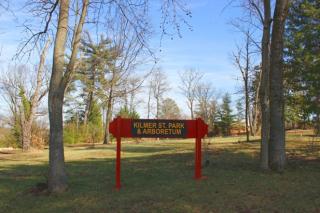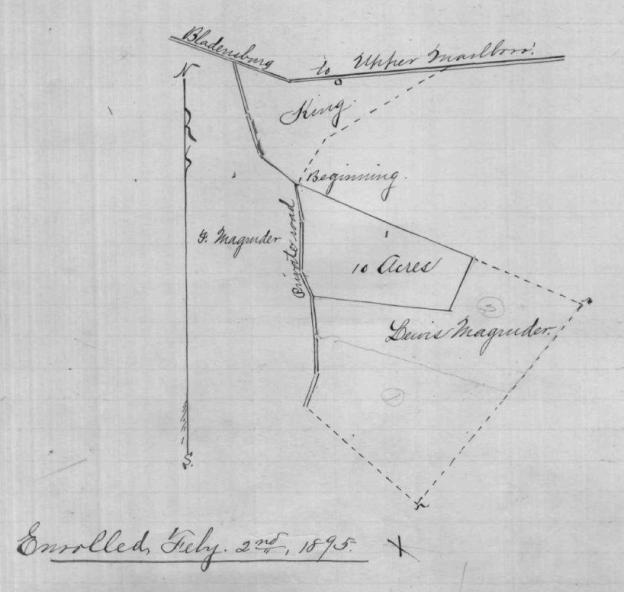Kilmer Street Park and Arboretum

Kilmer Street Park officially opened as a town park in early 2021, and shortly became "Kilmer Street Park and Arboretum" after its tree collection became officially certified!
Every year a team of arborists and volunteers reviews the collection of Kilmer Street Park and Arboretum (KSPAA) and takes notes on the growth and health of its trees. The trees around the park have been tagged with numbered, blue aluminum discs.
You can learn about each tree in KSPAA and access the database of those discs here: https://docs.google.com/spreadsheets/d/1AweajlCHsZmM4jnHYtoRGpPKwp7fYnzO...
Where Kilmer Street Park and Arboretum stands was once part of an 855-acre property compiled by Fielder Magruder (1780-1840). On his death the land was partitioned among his heirs. One son, Fielder Magruder (1814-1888) received the land west of what is now 62nd Place and 63rd Street, and another, William Lewis Magruder, also known as Lewis Magruder (1822-1897), that to the east. Lewis was listed as a farmer on the 1860 and 1870 census, as a butcher on the 1880 census, but as a farmer in a directory of the same year.
Lewis Magruder deeded 10 acres of this land bordering on 63rd to his son, Cassius Clay Magruder (1858-1911) in 1895.

Cassius Clay Magruder was listed as a farmhand in the 1880 census. In 1900 he was living in Tuxedo and working as a truck (vegetable) farmer. In 1910 he was a contractor and living in Hyattsville.
In 1910 Cassius sold the 10-acre parcel to Richard Scott (1877-1925), a Black farmer. Scott’s family was from Hyattsville, where his father, William Alexander Scott (1847-1917), worked as a farm laborer and farm overseer. Richard Scott operated a truck farm on the property. According to the 1920 census he employed workers on the farm. Probate records show that at his death he owned horses, pigs, and chickens. It appears that Scott’s house was about where the garage now sits.
Richard Scott’s widow, Senora (1888-1947), moved away, and in 1936 sold the property to Leon Clair Rosenkrans (1889-1971). Born in Wisconsin, Rosenkrans had worked as a farm laborer and farmer, manager of a telephone company, staff photographer for Harley-Davidson, and lastly as resident vice-president of the Fidelity and Deposit Company of Maryland. Although he resided outside the Cheverly municipal boundaries, he ran unsuccessfully for mayor in 1935. His second wife, Julia, was active in the Cheverly Woman’s Club, Cheverly United Methodist Church, the Cheverly-Tuxedo School Improvement Association, Cheverly PTA, and the Hospital Guild. Rosenkrans built a residence near the street in the 1930s. Their home hosted a Brownie Scout revel in 1945. The 1950 census shows an unrelated family living in the rear of the house.
From 1953 to 1956 Rosenkrans sold portions of the 10 acres, about 6 acres going to the Prince George’s County Board of Education for Happy Acres Elementary School, now Gladys Noon Spellman. Julia Rosenkrans sold the remaining 2.3447 acres to James L. Bowen (1931-2009) in 1990.
Following Bowen’s death, the property went into foreclosure, and was purchased by the Town of Cheverly in 2015 and annexed in 2017.
